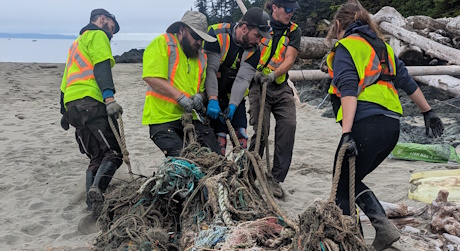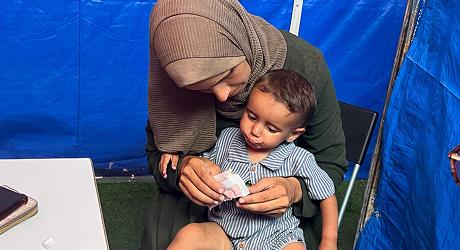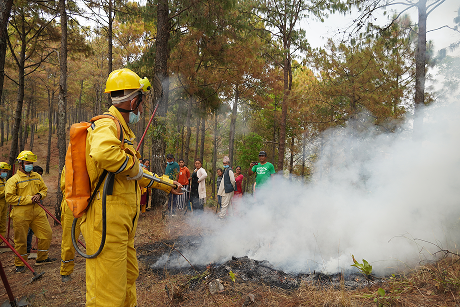Footprints Project
Since 2005, travelers like you have helped us change the world through micro-donations.
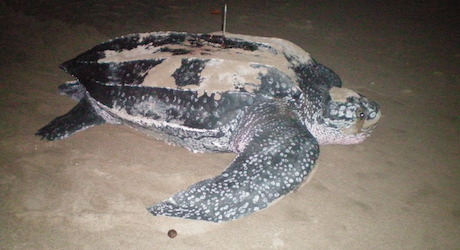
-
A total of
7279
Travelers
-
donated
$15002.94
(100% funded) -
to help improve
Environment
-
impacting
20
people -
in
Panama
Project Background
Soropta Beach is a black sand beach located north of the Bocas del Toro archipelago, between the river mouth of the Changuinola river and Punta Anton on Panama’s Caribbean coast. Three species of sea turtle have been reported nesting at this beach--leatherback, hawksbills and green turtles (though green turtles are rarely documented here). The most common species is the leatherback, and for this reason STC focused monitoring activities along the most active 8km of nesting beach from March thru July, to incorporate the main nesting season for this species.
This project was carried out during the 2016 leatherback turtle nesting season at Soropta Beach, Panama. Financial support from World Nomads customers and the Footprints Network provided essential resources to carry out a program that reduced illegal poaching of endangered leatherback turtles at Soropta Beach, Panama, through a rigorous monitoring and protection program overseen by Sea Turtle Conservancy (STC) and implemented by locally-trained indigenous community members.
The nearest human population is a nearby indigenous community of Ngobe-Bugle Indians, where most of the illegal poaching originates. STC implemented a proven strategy of hiring and training local community members to assist with turtle protection through a sustained program at a permanent field station. Through direct protection of the turtles and nests, combined with ongoing community outreach and education that explains the ecological and economic value of turtles (for ecotourism), STC is giving this population of leatherbacks a chance to recover.
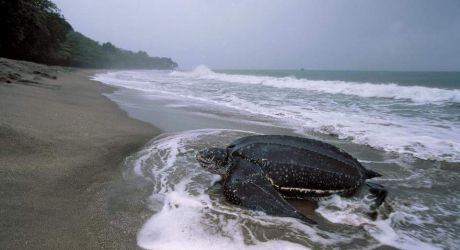
Project Overview
Beach monitors were selected prior to the start of the 2016 leatherback nesting season; all were from local communities inland from Soropta Beach. To ensure that data were collected according to the establish protocol, a three-day training workshop was held in March during which theoretical and practical sessions were conducted to teach the monitors about sea turtles, and to show them the correct method for applying flipper tags, taking standard carapace measurements, identifying species and marking nests using triangulation.
All staff were required to complete the training course, and pass an exam before being allowed to conduct monitoring activities unsupervised. Daily track surveys were conducted (see Table 1) from 1 March – 31 July, during which all tracks were identified to species, and each track was characterized as a successful nest or a non-nesting emergence (false crawl).
|
Months |
Leatherback |
Hawksbill |
||
|
|
Nests |
False crawl |
Nest |
False crawl |
|
March |
89 |
14 |
0 |
0 |
|
April |
220 |
45 |
0 |
0 |
|
May |
219 |
39 |
3 |
0 |
|
June |
81 |
12 |
4 |
0 |
|
July |
10 |
7 |
8 |
2 |
|
Total |
619 |
117 |
15 |
2 |
Table 1. Nesting Activity at Soropta 2016
During tracks surveys monitors also recorded levels of illegal take (of nests or turtles), predation or erosion (see Table 2). The poaching rate was lower than the previous several years at Soropta.
|
Fate |
Leatherback |
Hawksbill |
|
Poached |
25 |
1 |
|
Predated |
20 |
3 |
|
Eroded |
14 |
0 |
|
Total |
59 |
4 |
Table 2. Summary of Nest Survivorship, March-July 2016
In addition, nightly patrols were conducted at Soropta Beach, to encounter females coming ashore to nest. Each individual was checked for the presence of flipper tags; if no tags were present, two were applied to the flippers, and standard carapace measurements were also taken. Table 3 summarizes numbers encounters for species.
|
Species |
Number of
encounters |
|
Leatherback |
325 |
|
Hawksbill |
10 |
|
Green |
0 |
|
TOTAL |
335 |
Table 3. Summary of numbers encountered during night patrols at Soropta, March-July 2016
In addition to the scientific monitoring of this important nesting site, STC also works to protect nests from illegal poachers and educates the local community about sea turtle issues and threats to their survival. This is done by hiring local community members to work on the project and also by conducting educational outreach activities in the indigenous community and within schools in the nearby town of Bocas del Toro. STC also conducted satellite tracking of two leatherbacks that nested at Soropta.
The satellite attachment was observed by a number of community leaders and tracks of the turtles can be observed as part of the ongoing Tour de Turtles education program available online at www.tourdeturtles.org.
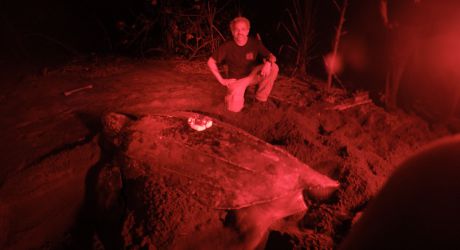
What's next?
The work at Soropta Beach represents a long-term commitment by STC to monitor and protect this critical nesting beach in partnership with the local community. We foresee the program continuing for at least another decade or more.
Can I visit this project?
Soropta Beach is in a remote part of Panama, but it is accessible through the town of Bocas del Toro and an hour-long boat ride. STC does accept a limited number of volunteers at its Soropta station and would be happy to work with The Footprints Network to make the experience available to staff or paying clients.
Traveling soon? When you buy travel insurance with us, you can make a contribution towards a cause you care about.
Get a quote